Coconut Oil: A Delightful and Healthy Treat
Despite its controversy, coconut oil is one of nature's healthiest products. Discover the various ways you can use it.
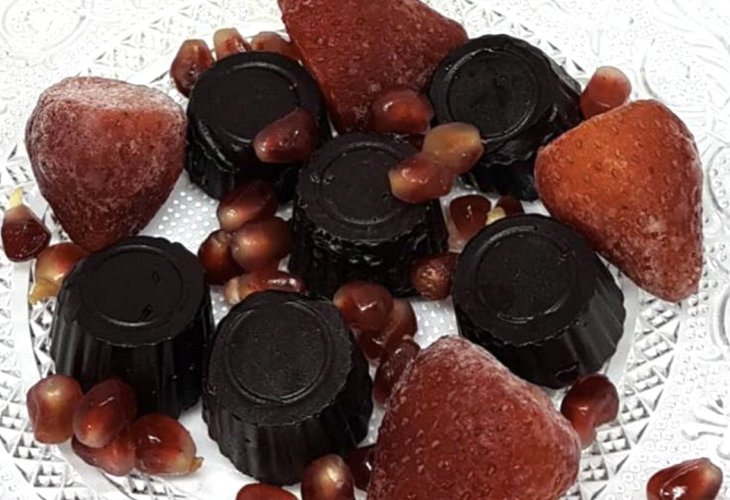 Pairs perfectly with berries
Pairs perfectly with berriesAfternoon.
The favorite time of day for my children.
They've finished school, lunch, homework, and their household duties – now it's their time.
It's time for hobbies or meeting friends and neighbor kids.
There's time before showers and dinner, perfect for a fruit serving.
From my experience – if the fruits are diverse, colorful, sliced, and nicely presented, the plate is likely to come back empty.
Fruits are best eaten between meals, definitely not as a dessert.
Because they digest relatively quickly, if eaten after a heavy meal, they'll sit and ferment in the stomach, causing gas, bloating, and discomfort.
However, nuts pair wonderfully with fruits.
It makes sense, they both grow on trees – they've got something in common.
The fat in the nuts also slows the rapid absorption of sugar from the fruits.
With Hashem's help, in upcoming articles, I plan to focus on recipes for healthy, tasty, and fun afternoon snacks combining fruits and nuts.
I want to start with coconut oil, made from the coconut, precisely because it's so controversial and widely debated.
On one hand, some praise it for its many virtues, while others caution against it – saturated fat! Beware.
At this point, comes Dr. Gil Yosef Shahar, the Orthodox doctor and head of the Rambam Medical Center.
I really enjoy reading his fascinating articles, not only on nutrition but also on topics of faith.
Dr. Shahar explains, "Many people in Israel fear coconut oil, thinking it's saturated fat, it's bad, raises cholesterol levels... it's a completely false myth".
There is a significant difference between saturated fat from animals and coconut oil from plants.
Animal saturated fats are long-chain fatty acids, compared to coconut oil made up of medium-chain fatty acids.
Medium-chain fatty acids do not deposit in the arteries.
And that's not all...
Medium-chain fats are absorbed more easily, they don't need bile juices to break down and are absorbed directly from the intestines to the blood. Hence, the feeling of satiety is quicker.
It turns out that coconut oil contains fats naturally found in breast milk.
Additionally, coconut oil supports various body systems including the hormonal and cardiovascular system, acts as an antioxidant by neutralizing free radicals, and exhibits potent antiviral and antibacterial properties against a wide range of viruses, bacteria, and fungi, like the notorious candida.
Another advantage, and I believe the most important one – it turns out to be the most stable fat, not breaking down when heated, making it an excellent choice for frying, cooking, baking, and even spreading on bread.
Now that we have a jar of coconut oil, what can we do with it?
- Schnitzels fried in coconut oil have an amazing aroma.
- Antipasti drizzled with a bit of coconut oil and coarse salt before roasting – superb.
- When craving a snack, you can always put a tablespoon of coconut oil in a pot, heat, add popcorn kernels, and season with sumac and nutritional yeast.
But why not expand horizons beyond the kitchen?
Here are some additional uses for coconut oil:
- Improving oral health
Daily rinsing with coconut oil has been found to help combat plaque and gum diseases. - Relieving skin irritations and eczema
It's been found that applying coconut oil improves various skin inflammations and issues.
- Moisturizing the skin
Coconut oil is excellent as a moisturizer for the feet, arms, and elbows. If you don't have oily skin, it's great for the face too.
- Soothing insect bites or stings
Being anti-inflammatory, it may alleviate pain or itching caused by insect bites as well as reduce swelling and infection risk. - Chapped lip treatment
Coconut oil is also a natural, ideal lip balm keeping lips smooth and shiny for hours.
Of course, there are many more uses, but why not let you discover them yourself...
I want to tell you about Miriam the Hebrew, a Jewish alchemist in Egypt around 1800 years ago.
She was famed mainly for her unique development of tools and laboratory equipment.
The most famous tool she developed was a double boiler. The bottom holds boiling water that slowly and controllably melts the contents in the upper vessel.
This tool is still found in chefs' kitchens today and is called by them, the bain-marie, or in Hebrew, Miriam's bath.
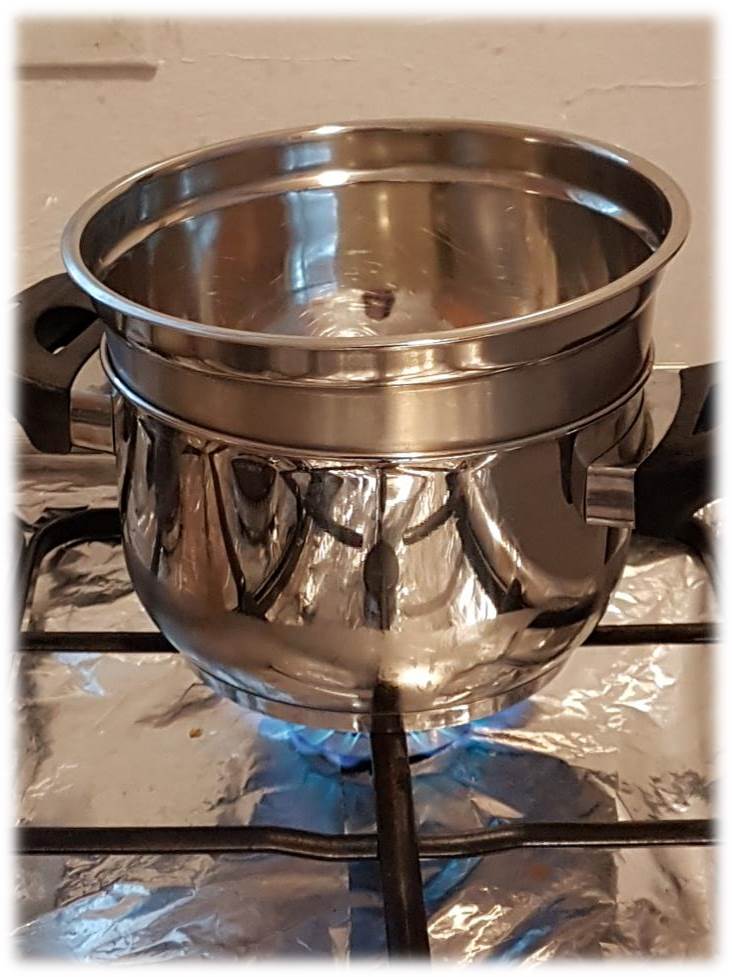 Miriam's bath
Miriam's bathThe reason I'm telling you this is that coconut oil is liquid in summer but solidifies in winter.
To melt it in a controlled manner, we must use Miriam's bath.
I place the coconut oil in a stainless steel bowl over a pot of boiling water.
Once it melts, you can begin to create wonders with it.
For example, rich and high-quality chocolate truffles that strongly resemble the texture and taste of the luxury chocolates sold in specialty stores in Belgium and France.
Ingredients:
- 1/2 cup coconut oil
- 1 cup cocoa powder
- 1 cup date syrup (ensure the ingredients state 100% dates)
- Silicone molds in shapes for chocolate (available in disposable goods or kitchenware stores)
Directions:
- Melt the coconut oil in Miriam's bath.
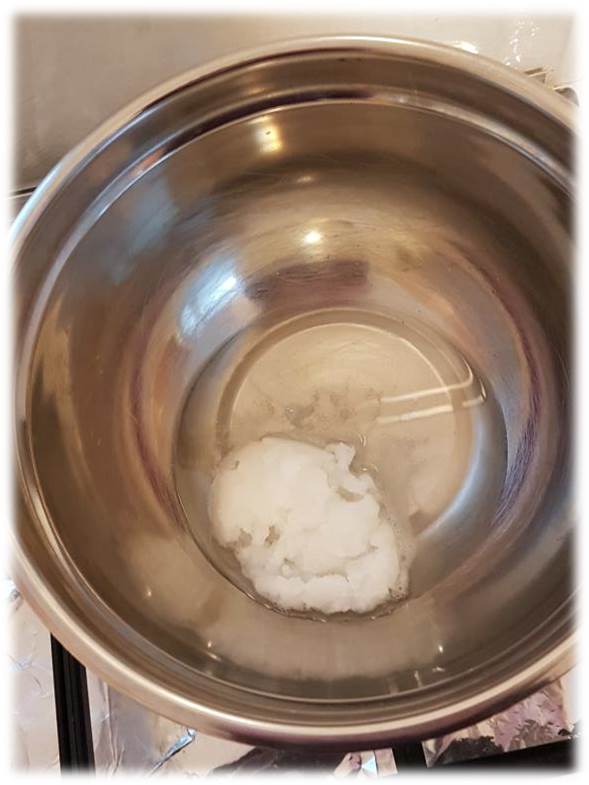 Melting the coconut oil
Melting the coconut oil- Add the cocoa and date syrup, mixing into a rich, consistent chocolate mixture.
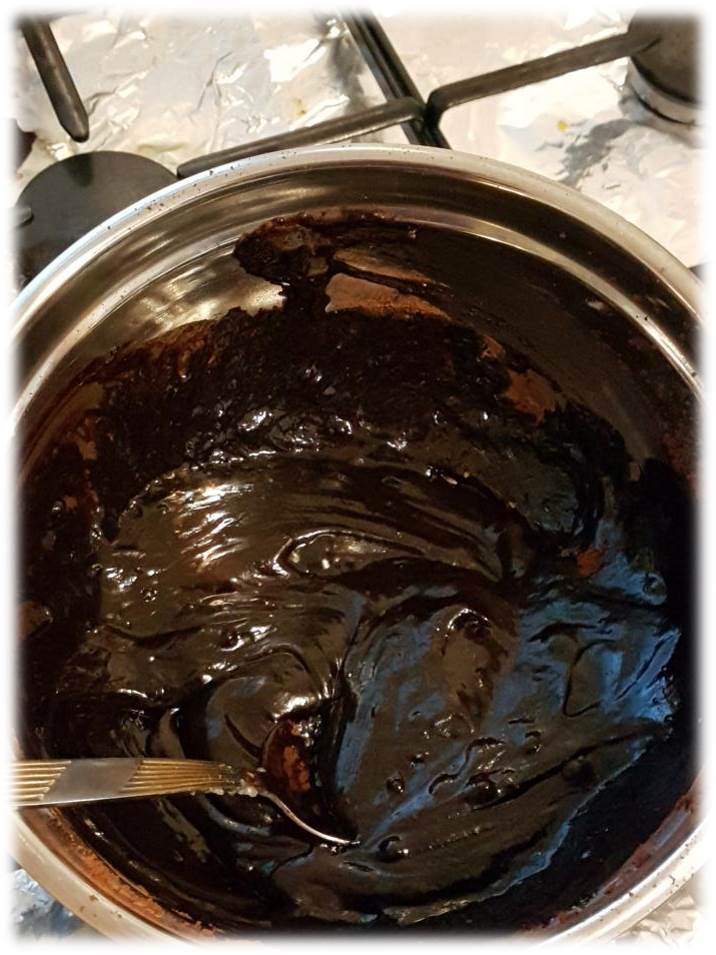 Adding cocoa and date syrup
Adding cocoa and date syrup- Pour into the silicone mold.
- Smooth with the back of a kitchen knife (the smooth part, not the serrated edge).
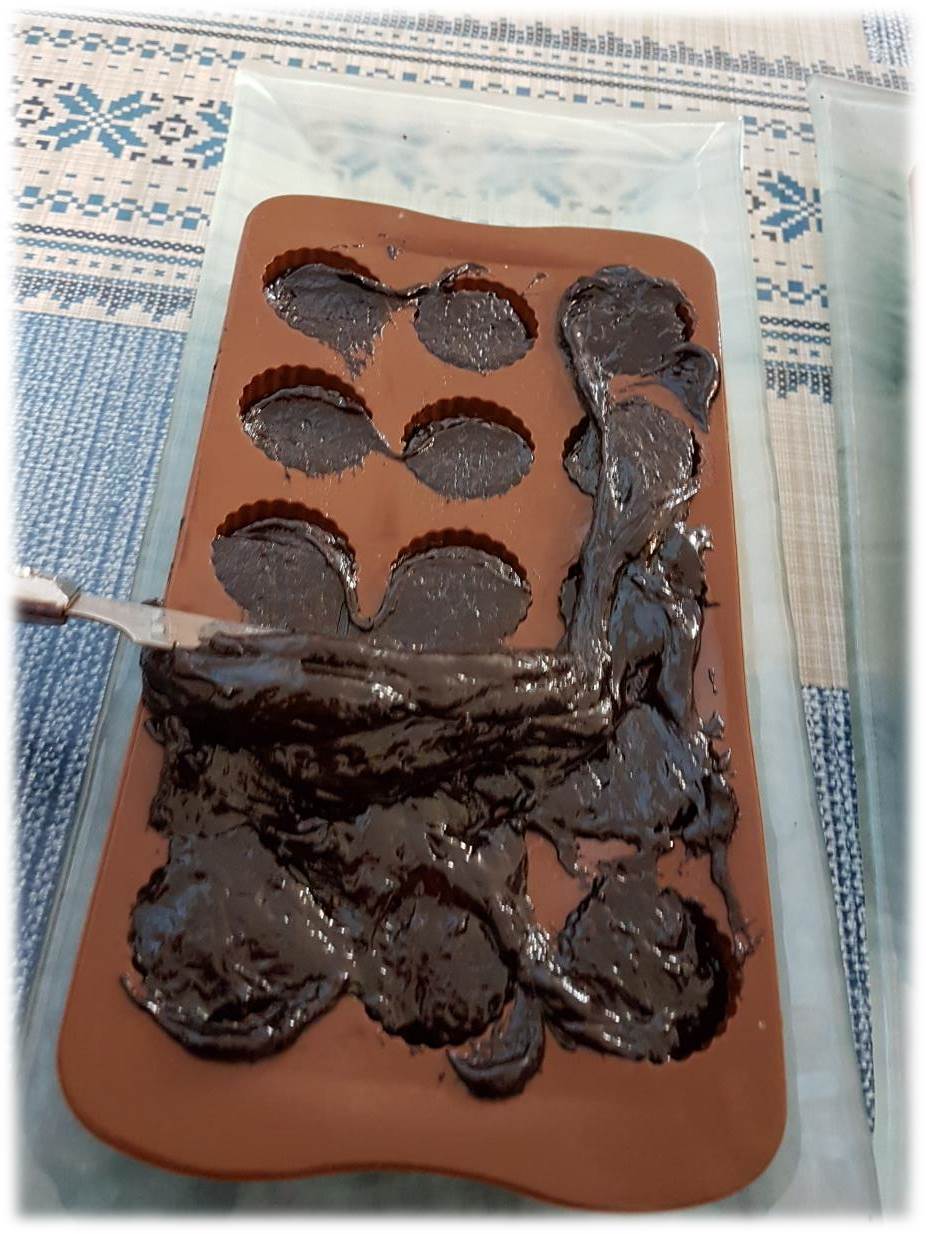 Transfer to silicone chocolate mold and smooth with the back of the knife
Transfer to silicone chocolate mold and smooth with the back of the knife- Place in the refrigerator (not the freezer) for half an hour to set.
- Serve, preferably with seasonal fruits (banana and strawberries/banana and melon or berries).
Beware! It's addictive
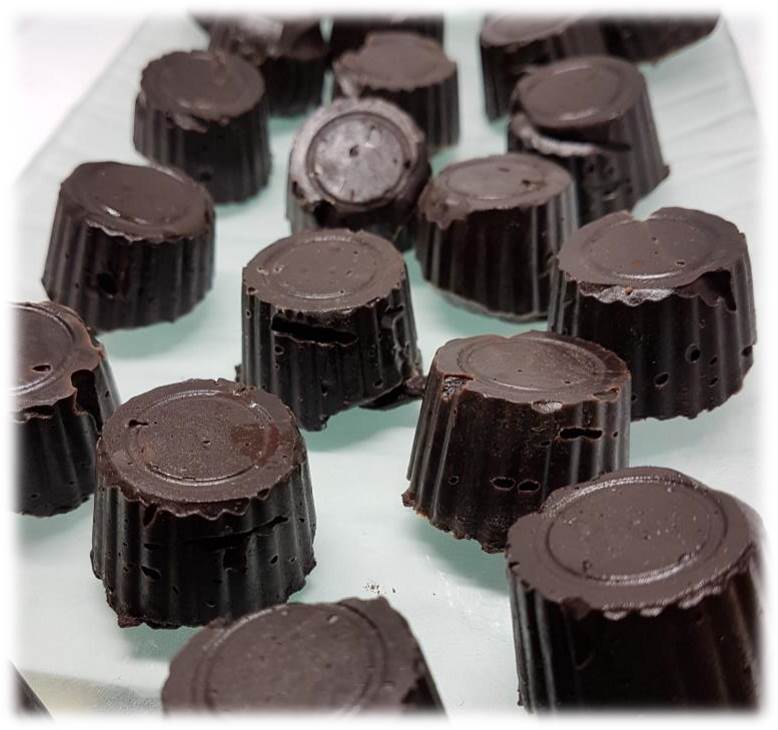 Rich chocolate truffles
Rich chocolate truffles
Most kids and adults delight in these truffles, with the texture and taste of rich chocolate.
But some kids prefer the classic, good and simple milk chocolate.
So especially for those who want super-sweet, with Hashem's help, next week I'll bring recipes for chocolate just like they're accustomed to – only healthier and homemade, of course.
Until then, stay healthy,
Chan Tovi

